Recent Articles
Popular Makes
Body Types
2019 Kia Niro vs. 2019 Honda HR-V: Which is Best?
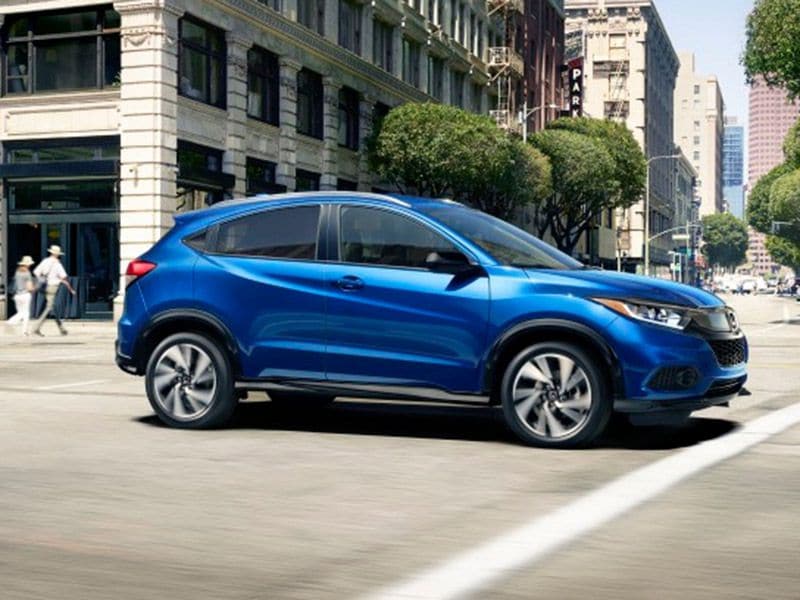
2019 Honda HR V profile ・ Photo by Honda
The Kia Niro and Honda HR-V are two very different takes on the small crossover SUV segment. The Honda HR-V has been a big player in the subcompact crossover segment since its introduction in 2016, and its approach is straightforward. It is a crossover in the SUV idiom. The Niro, which was introduced only one model year later, seems like a much newer design largely because it is a segment-bender. Kia execs like to refer to it as a crossover SUV, but it is more a mashup of station wagon, hatchback, crossover, and hybrid.
Both vehicles offer four-cylinder powerplants, and both vehicles seat five, but the Niro is available only as a hybrid or plug-in hybrid. You wouldn’t choose either of them for classic automotive performance, but in terms of versatility, safety, interior room, and overall utility, they both stick the landing.
So, what are we talking about here?
The Honda HR-V now is in its fourth year in the market, and it’s built by a brand known for quality, so it is a bit surprising that the HR-V was at the bottom of its segment in the 2018 J.D. Power Initial Quality Study (IQS). On the other hand, the Kia Niro placed sixth in IQS in a 13-vehicle field. Its weakest category was Mechanical.
As we noted previously, the Honda HR-V goes the conventional crossover SUV route. It is tall and offers a high driving position. While Honda designers added swoopier looks, you won’t mistake it for a sports wagon. But if you squinted, you might mistake the Niro for a sports wagon or a hybrid wagon. Not as tall as the HR-V, its driving position is only moderately higher than that of a car.
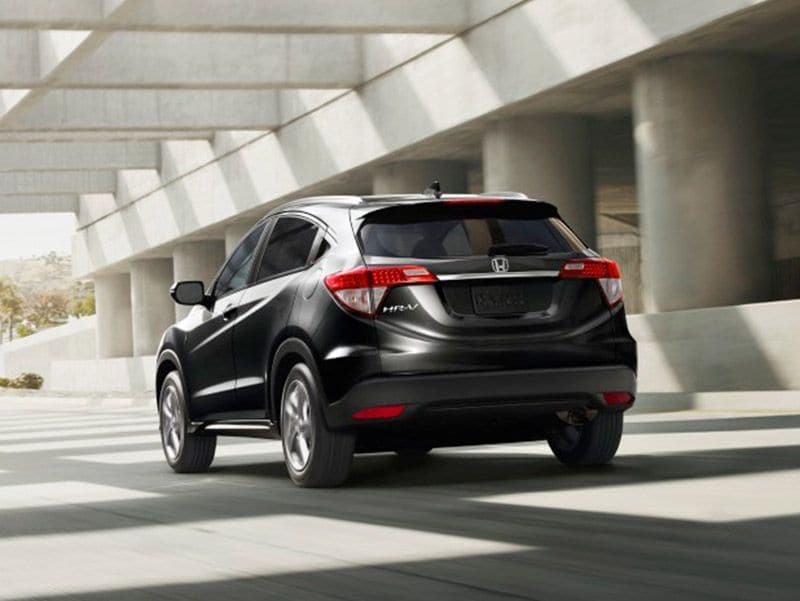
Photo by Honda
Base Engines and Transmissions
The Niro is all hybrid, all the time. Its base powertrain is a conventional hybrid system that includes a 104-hp 1.6-liter inline four-cylinder engine teamed with a 240-volt AC synchronous permanent magnet motor. Power for the electric motor is provided by a 240-volt 1.56 kWh lithium-ion polymer battery. The combined system delivers 139 hp, which implies no drag racing. But it does offer a six-speed dual-clutch transmission in contrast to many hybrids that use a continuously variable transmission.
Both the base front-drive Honda HR-V and the all-wheel-drive version are equipped with a 141-hp 1.8-liter four-cylinder engine. The engine is paired with a continuously variable automatic transmission, since Honda decided to drop the six-speed manual. Of course, if you want all-wheel drive in the Niro, you’re simply out of luck.
Honda HR-V
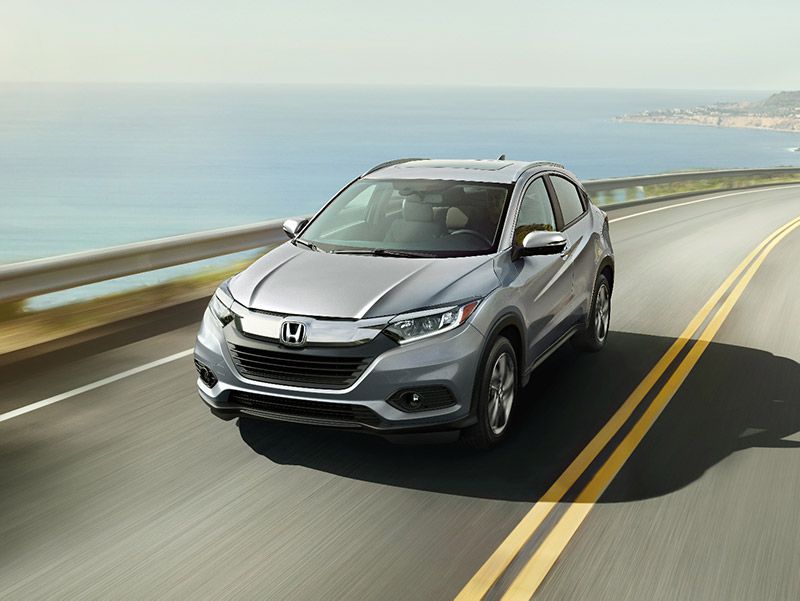
Photo by Honda
Optional Engines and Transmissions
The plug-in hybrid version of the 2019 Kia Niro uses the same 1.6-liter four-cylinder engine as the non-plug-in, but the electric motor is upgraded to a 360-volt 60-hp unit. At the same time, the battery pack has been upgraded to a 360-volt 8.9 kWh lithium-ion polymer battery to offer more EV-only driving range. A fully charged Niro PHEV has an electric-only range of 26 miles, about the distance from the California mainland to Catalina Island.
The Honda HR-V doesn’t offer any optional engines at all. Instead, all HR-Vs are powered by the same 1.8-liter four-cylinder engine, an engine that isn’t the most stellar in the Honda parts bank. Its upside is excellent fuel economy for a conventionally powered vehicle.
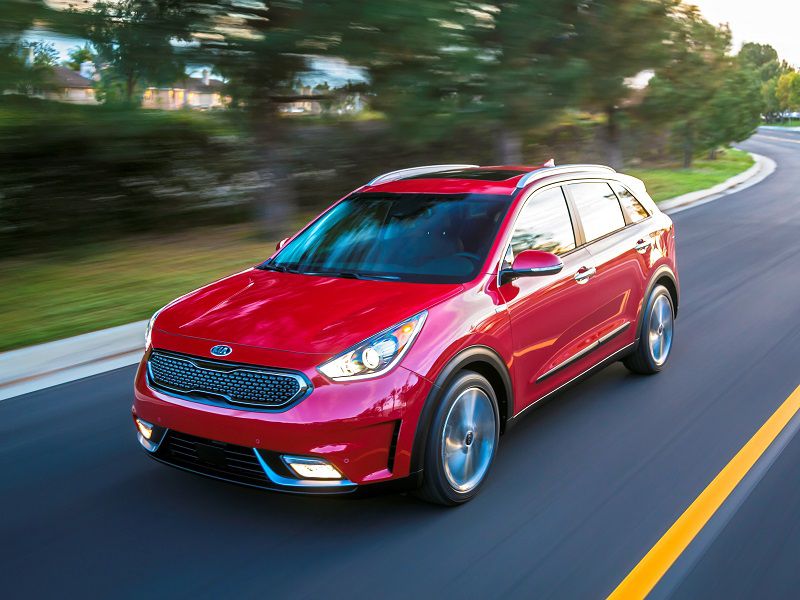
Photo by Kia
Handling and Roadability
The Kia Niro and Honda HR-V offer different driving dynamics. With its reasonably low profile and commensurate low center of gravity, the Kia Niro is the epitome of “car-like” handling. The key difference in feel between it and a European sport wagon is the weight of its battery pack, which is noticeable.
In contrast, the Honda HR-V has the driving dynamics of a subcompact crossover because that is exactly what it is. This manifests itself in more body roll in hard cornering than you’d experience in the Niro. Interestingly, in ultimate cornering ability, the HR-V has a little more “stick” than the Niro, but you might feel more uncomfortable getting there. Acceleration in each vehicle is mild. You won’t have much trouble accelerating into expressway traffic on an on-ramp, but you won’t go stoplight-to-stoplight racing, either.
Kia Niro
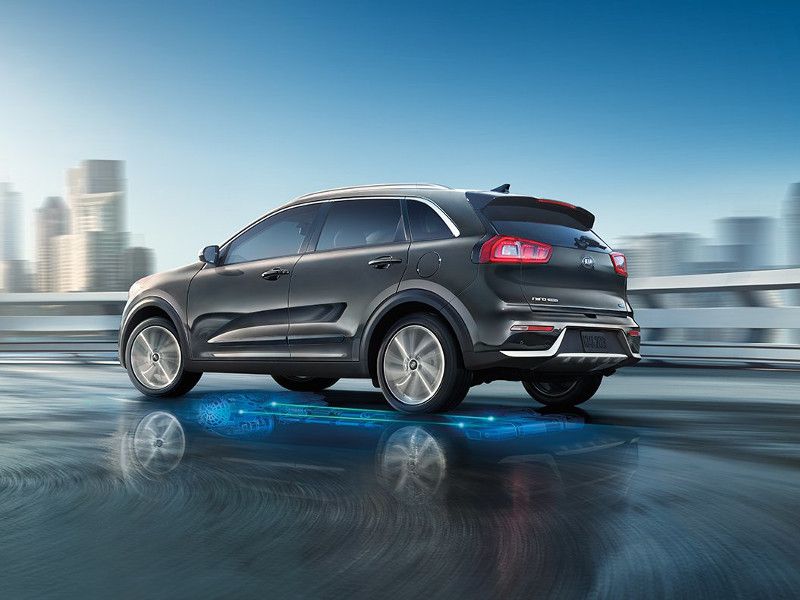
Photo by Kia
Exterior Style
So, do you favor vehicle styling that features a significant amount of sculpting and character lines? Or do you prefer a less frenetic, more tailored approach? If you said the former, odds are you will like the exterior styling of the Honda HR-V. Its designers did a good job of adding sculptural elements to what are essentially two boxes stacked one on the other.
If, however, you like a restrained exterior look, you will probably favor the Kia Niro. Aside from a serious character line across the doors, it is as classically tailored as a Brooks Brothers suit. The tale of the tape tells a lot. The Niro is about 2.5 inches longer than the HR-V, and it is 2.5 inches shorter in overall height than its rival. That means the Niro is shaped more like a traditional station wagon than the stubby, taller HR-V.
Kia Niro
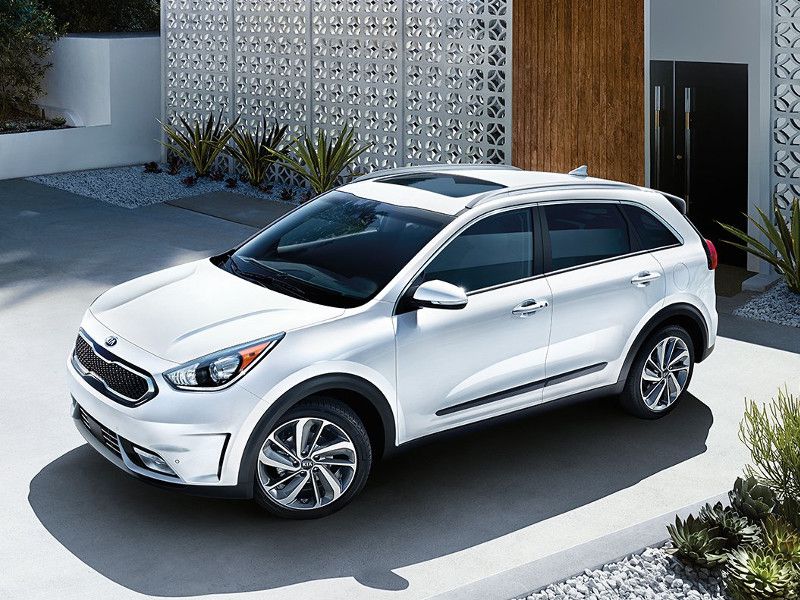
Photo by Kia
Interior Style
Honda and Kia have become known for offering clean, well-designed, highly ergonomic interiors. In recent years, that came off the rails for Honda for a simple reason: Honda vehicles stopped offering a volume knob on their audio systems, requiring customers to use up-and-down buttons instead (bad idea). Kia, which retained traditional controls, including those for the sound system, gained ground because of it.
Honda has since realized the folly of its former ways, and a key change for the HR-V in the 2019 model year is the addition of a volume knob. With that wrong righted, the HR-V interior and the Niro interior are similarly handsome, flawlessly assembled, and easy to understand. Both vehicles seat four adults comfortably and five adults in a pinch. The HR-V’s driving position is about 2.5 inches higher than the driver position in the Niro. A lot of people like that.
Honda HR-V
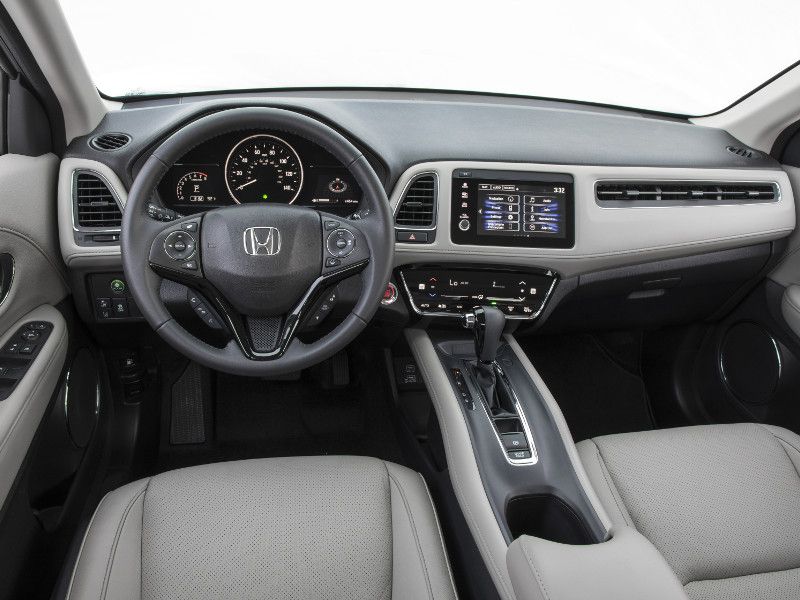
Photo by Honda
Infotainment and Technology
The Kia Niro offers a straightforward standard infotainment system that is simple to grasp, and its upscale sound system is even better. In all but the top Touring trim the system centers around a 7-inch touchscreen, accompanied by dedicated buttons and knobs. In the Touring models, an e8-inch touchscreen is accompanied by a Harman Kardon eight-speaker surround-sound system with a subwoofer. Kia’s UVO eServices infotainment system offers standard Android Auto and Apple CarPlay, and Bluetooth plus AM/FM/MP3/SiriusXM audio. Auxiliary and USB input jacks are standard across all Niros.
After customer (and vehicle reviewer) complaints, Honda redesigned the HR-V’s infotainment system for the 2019 model year. The updated Display Audio system, available in Sport and higher trim-level vehicles, features a 7-inch touchscreen that has been reconfigured with new icons to make using it easier. Oh, and then there’s the volume knob. Hallelujah! Apple CarPlay and Android Auto integration are now standard on Sport and higher trims, and Touring models offer an optional upgraded navigation system.
Kia Niro
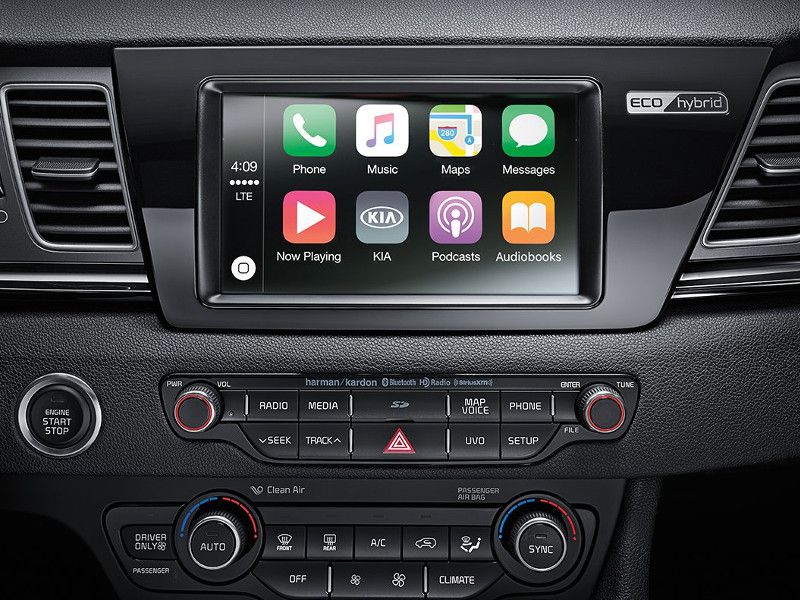
Photo by Kia
By the Numbers
When it comes to fuel economy numbers, the Kia Niro turns in a baffling array of results, but the thing they all share is their overall impressiveness. The fuel-saving FE trim has EPA ratings of 52 mpg city/49 mpg highway/50 mpg overall, while the LX and EX trims have EPA ratings of 51 mpg city/46 mpg highway/49 mpg overall. The Niro S Touring and Niro Touring rate 46 mpg city/40 mpg highway/43 mpg overall. The plug-in hybrid Niro PHEV isn’t the most fuel-efficient Niro model due to its heavier battery pack, but it still offers EPA ratings of 48 mpg city/44 mpg highway/46 mpg overall. Its MPGe rating is 105.
In contrast, the front-drive Honda HR-V delivers 28 mpg city/34 mpg highway/30 mpg overall, and the versions with all-wheel drive get 26 mpg city/31 mpg highway/28 mpg overall. As you can see, the conventionally powered HR-V is significantly less fuel-efficient than the hybrid Niro. Go figure.
Kia Niro

Photo by Kia
The Verdict
It is difficult to pick a winner here, because the two vehicles are so different. If you’re seeking a traditional crossover SUV, the HR-V is a great choice. If you seek a vehicle that has more car-like attributes and offers hybrid-scale fuel economy, the Kia Niro clearly is the winner. Both offer high-quality construction, easy-to-understand controls, and a generous level of standard equipment.
The Kia Niro does offer a much longer vehicle warranty, and that could be one point of distinction. For us, the Niro’s more car-like handling and its superstar fuel economy are the big separators. That’s why, in this very close comparison, we choose the Kia Niro.
Kia Niro

Photo by Kia